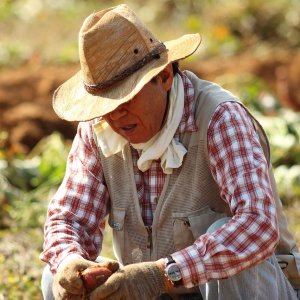Public Policy Based on Opportunity, Long‑Term Vision

STORY INLINE POST
Q: CNA has been in the country for over 30 years. What is its relevance in modern Mexico?
A: Mexico is the most open country in the world. We have 12 free-trade agreements with 46 countries and we continue to work on our commercial relationships. 2018 was about solidifying those relationships through the signing of USMCA, the treaty with the EU, the Pacific Alliance, the Agreement of Economic Complementarity with Argentina (ACE 6) and the Agreement of Economic Complementarity with Brazil (ACE 53). We are trying to influence how fast the treaties are implemented and the strategy for their implementation. We are looking out for Mexico’s interests and making sure that the future of the Mexican agricultural industry is backed by better agreements.
Q: Mexico is the 12th-largest food exporter in the world. What strategies must be implemented to increase its world ranking?
A: We need to work on what it is called “Agriculture 4.0.” There is much to be done in terms of research, patents, seeds, product positioning, modernization of irrigation, fertilizers, agrochemicals and satellite information regarding the effects of climate change, plague monitoring and sensors to measure humidity. We need to work on having an intensive agriculture sector, modernized and supported by research, and we need to train our personnel to generate more opportunities. The problem we are now facing in the agricultural sector is a lack of human capital. To address this issue, we are working on agreements with Central America to allow access to temporary workers who can help us during the harvest season. However, this is not enough; we need to invest in technology, talent and infrastructure of cold chains, among many other issues.
CNA is working on its 2030 vision, a long-term plan that encompasses subjects like budget, water, social security, research, infrastructure and storage. The country has great potential but needs investment to foster growth. Mexico exported US$4 billion in agricultural products to the US in 2017 and we finished the year with exports equivalent to US$32.5 billion, which is higher than remittances, tourism or oil. Alongside exports of vehicles and electronics, agricultural products are the third-largest source of exporting revenue for the country.
Q: How can the principle of added-value products be implemented in the agribusiness sector?
A: Generating products with added value in the agricultural sector is a priority for us. We have examples of meat companies generating their own productive chains, a process that is being replicated for pork and rabbits. We have seen companies that process fruits and vegetables also riding the wave of added-value products. It is a matter of exploiting what we already have. Around 32 percent of what we produce in the agricultural sector goes to waste due to factors that include logistics, price and infrastructure.
Q: Sometimes small producers are not interested in inserting themselves into export or productive chains. What is CNA doing to address this?
A: Within CNA, we have a foundation that focuses on small farmers, transfers technology to them and provides guidance on how to produce more efficiently. We also cooperate with the World Economic Forum’s VIDA project. This project helps small farmers by providing them with enhanced seeds, insurance and technical assistance. The project also helps farmers create partnerships with their neighbors so they all focus on a single product and puts them in contact with companies that are in need of that product. It is a project we are very proud of and has helped a total of 32,000 farmers.
Q: How do you reconcile the nationalistic discourse that exists in the Mexican agricultural sector with its modernization needs?
A: The issue we see is that it has come to a point where it is unsustainable. Public budgets for the agricultural sector have been limited. Eight years ago, around 30 percent of SAGARPA’s budget was destined directly to the agricultural sector; today, it is around 20 percent. If farmers do not change their mentality, they will not survive. There is significant migration from rural areas, which combined with the average age of farmers, which is around 58 years old, generates a significant problem. We need to find ways to retain younger people.
Q: How is CNA working to make the agricultural sector more attractive to younger generations?
A: The first approach is to have more schools and universities that offer academic programs focused on the agricultural sector. We have developed a project through CNA’s foundation called “Dual Education.” We have already registered this project with the Ministry of Public Education (SEP) so it can provide scholarships while we offer part-time jobs. Students also have a job once they graduate. The advantage is that while they are studying, they can participate in their classes with already proven experience.
Q: Given Mexico’s experience with free-trade agreements, how could the country benefit from the USMCA?
A: First, there must be fair and balanced treatment. Also, standards of quality, health and safety need to be improved. Facilitation of border crossings is another issue that also impacts products. A practical case from which we could learn is the cross-border point in Arizona. All US governmental agencies needed to approve products for the US market are in this one location, facilitating and expediting the entrance of agricultural products to the US. In some cases, large agricultural companies can have within their facilities pre-certificates of origin, making the crossing between the two countries even faster. These are just two of the great added values that exist in the trade between Mexico and the US.
Q: What is your long-term vision for the Mexican agricultural sector?
A: Sometimes, in cities like Mexico City, the agricultural sector is not as valued as it should be. But there are cities where GDP is derived almost exclusively from the food sector. In Mexico, we have seen many significant crises and I have learned that during those times the agricultural sector is the only one that grows.
By 2050, the global population is estimated to hit 9.3 billion people and the Food and Agriculture Organization of the United Nations (FAO) recommends that by then, we should grow our food production by at least 65 percent. By 2030, we expect to have 140 million inhabitants in Mexico. Agriculture is the one sector we cannot do without. Those of us in the sector are always striving to generate new products, to have access to new markets and to produce products that have a healthy impact on the consumer.
Still, it is a sector that faces two significant challenges: climate change and urban sprawl, meaning that the land available for growing food is becoming smaller and climate change is making some areas more arid. As farmers, we need to do more intensive farming.
The National Agricultural Council (CNA) is a Mexican business association founded in 1984 that groups the agricultural, livestock and agroindustry sectors. It represents the interests of the agricultural sector to other private and public players























